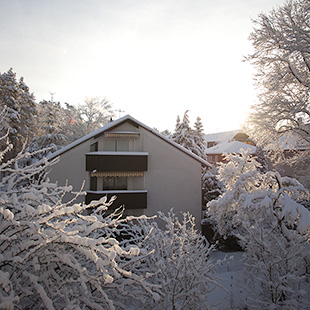equipment reviews
zeiss distagon t* 3.5/18 ze
After I purchased a Zeiss Distagon T* 3.5/18 ZE, I am wondering even more why Zeiss lenses are so uncommon for Canon cameras. The over 100 years old German company is one of the world's most honoured manufacturers of cine and photo camera lenses. The name Carl Zeiss is associated with expensive and high-quality products. Zeiss designs and builds lenses for a wide variety of photo camera brands, though it may not be evident because many products of this company are known under other names. For instance, lenses of Hasselblad cameras are actually Zeiss lenses that were developed and licensed for the renowned Swedish brand of medium format cameras. The line-up of SLR lenses offered by Carl Zeiss isn't yet very big. For the time of writing, there were only 10, and Distagon T* 3.5/18 was the only ultra wide lens being produced by this company for 35 mm cameras. Just like other Zeiss lenses, it features excellent image quality, light weight and superb build quality. For the time I purchased it, among ultra wide primes for Canon, it was the only one that could be used with filters.
design and construction
The build quality of Distagon T* 3.5./18 ZE is exceptional. All parts of its body are made of metal with highest precision. There is no rubber nor plastic, and, when you are holding it in your hand, it feels cold even at room temperature. This feeling is very different from Canon and Sigma lenses that I own. They are of great quality, too, and I am not going to say now that a full-metal construction makes a better lens. What I am saying is just that it feels different when you are holding a Zeiss lens and rotating the focusing ring with your fingers. Since I am a biologist, it reminds me more of a microscope than of a photo lens. Sample variations and quality control problems that are plagueing Sigma are for Carl Zeiss not an issue: Every single bit of this lens is just perfect.

Compared to other ultra wide lenses, the Distagon T* 3.5/18 has a very compact design and is the smallest among other 17-18 mm lenses for Canon EF mount. It has a cone-like shape — with a broad, 82 mm, dish-like front element socket. Unlike Canon and Sigma, Carl Zeiss doesn't supply any case with the lens when you buy it. Actually, the lens bags and poaches of Sigma and Canon, are only useful when you want to sell the lens again. They are not suitable for use in the field, so I prefer Lowepro and Think Tank Photo bags instead. The Distagon T* 3.5/18 ZE with hood fits perfectly into a Lowepro S&F 1W poach.
The lens hood is made of metal that looks and feels more solid and more high value than plastic hoods of other manufacturers. Unlike Canon and Sigma hoods, it has a metal mount and attaches very precisely and firmly to the lens.

Size comparison of Zeiss Distagon T* 3.5/18 ZE and Canon EF 17-40 mm f/4 L USM. Since the mount cap of Zeiss is a little lower than of Canon, both lenses here are with Canon caps.
features
Like other Zeiss lenses, the Distagon T* 3.5/18 ZE is a manual-focus-only lens. Some reviewers are stating this as a disadvantage, or lack of a modern feature despite a high price, but I don't see it so. Since it is primarily a landscape and architecture lens, autofocus is not that important. Anyway, when I am shooting landscapes, I never use autofocus.
The focus confirmation function in Distagon T* 3.5/18 ZE may make focusing easier: It signals in the viewfinder and acoustically (if the sound signals were turned on in the camera) when the focus was achieved. Personally, I wouldn't rely more on my eyes than on this feature, however.
In the following table, the currently main lenses with focal length 17-18 mm for Canon full-frame cameras are compared.
| Zeiss Distagon T* 3.5/18 ZE | Canon EF 17-40 mm f/4 L USM | Canon EF 16-35 mm f/2.8 L USM II | Canon TS-E 17 mm f/4 L | Sigma 12-24 mm f4.5-5.6 EX DG / HSM | |
| Aperture (at 18 mm) | 3.5 | 4.0 | 2.8 | 4 | 4.5 |
| Minimum working distance, cm | 30 | 28 | 28 | 25 | 28 |
| Autofocus | no | yes | yes | no | yes |
| Image stabilizer | no | no | no | no | no |
| Filter mount, mm | 82 | 77 | 82 | no | no |
| Weight, g | 510 | 500 | 640 | 820 | 600 |
| Length, mm | 85 | 97 | 111 | 107 | 102 |
resolution
This section will be completed soon.
distortion
The authors of all reviews of Zeiss Distagon T* 3.5/18 ZE that I read before have been pointing this issue out as its main flow. Although distortion is handled by this lens very well, some of it remains. I tried to apply the automatic lens correction in Photoshop and Lightroom but didn't succeed: The result I got was looking even worse. Also with manual adjustments I couldn't manage to completely eliminate the distortion.
As you can see in the following chart, the distortion is quite insignificant, however, and it will be even less noticeable in real life photos. Anyway it is less present as in other wide angle lens listed in the above table — with exception of TS-E. In landscape photos I can live with it.

In this chart photographed at minimum focusing distance (about 30 cm), some distortion can be recognized which isn't looking significant to me.
The non-uniform ("mustache") distortion that other reviewers are writing about can be even easier noticed in the following picture of ISO 12233 lens testing chart: The horizontal lines appear a little curvy.

chromatic aberrations
This section will be completed soon.
vignetting
As you can expect, this lens shows quite strong vignetting when wide open. The light fall-off reduces significantly already at f/5.6 and remains at a constant level.
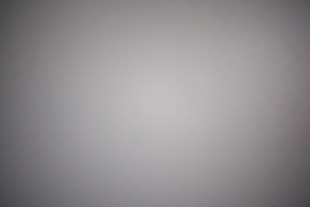 f/3.5
f/3.5
 f/5.6
f/5.6
 f/8
f/8
 f/11
f/11

f/16
real-life samples
Here are some images taken with Distagon T* 3.5/18 (on Canon EOS 5D Mark II) to demonstrate its performance in normal, real-life conditions. Of course, all images are as shot, i.e. converted from RAW without any processing. All in-camera image processing was also turned off.
sharpness
I am quite impressed by the uniformity of sharpness. Center, corners and borders of an image that was capture with Distagon T* 3.5/18 are almost equally sharp. The following samples are 100% crops of center, corner and side areas of an image that I have taken at maximum aperture without tripod, i.e., handholding the camera.
 Cropped areas are marked here by yellow squares.
Cropped areas are marked here by yellow squares.
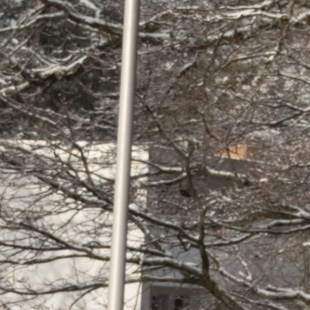 Center
Center
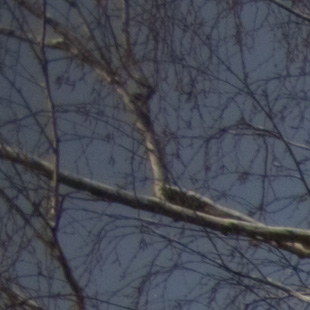 Corner
Corner
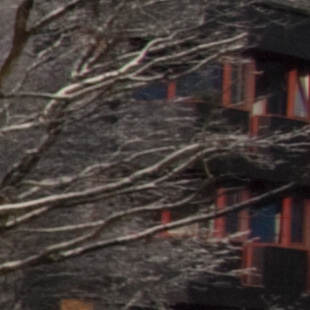 Border
Border
In corners, the image is about as sharp as in the middle. However, it appears a little softer at frame borders. Since I would use a wide lens with maximum aperture quite rarely, for me the sharpness at f/3.5 is not of critical importance. However, it is a significant indicator of overall image quality that this lens is able to deliver. The resolution of Zeiss Distagon *T 3.5/18 ZE with aperture wide open isn't bad at all. As usually, the sharpness of images increases when the aperture is stepped down and is at its best at f/8 - f/16.
vignetting
In landscape photos at f/3.5, the light fall-off away from the frame center is well visible. It is at similar level as in EF 17-40 mm f/4 L USM at 17 mm, or even somewhat stronger. The shadows almost completely disappear at f/8. You can see it in the following samples — put the mouse cursor over the image to compare.

Vignetting comparison at f/3.5 (ISO 100, 1/1000s) and f/8 (ISO 100, 1/200s). (Put the mouse cursor over the image to view the f/8 sample.)
Vignetting can be easily corrected in RAW converter. This can be done automatically with the profile that is provided for Adobe Creative Suite, but for optimum results, some manual correction is necessary. The following picture shows the results that I have achieved in Adobe Lightroom. I applied automatic correction first, and made some little adjustments afterwards manually.

The image taken at f/3.5 (ISO 100, 1/1000s) after vignetting correction. In this small size it looks almost identical to the f/8 sample showed above.
flare
Unfortunately, Distagon *T 3.5/18 ZE appears to be more prone to flare than I expected. The colour spots and haze caused by flare may be removed in postprocessing from the images shot at f/3.5-f/5.6 but at narrower apertures — which are usually preferred for landscape photography — flare can cover much of the frame surface making the image unusable. The following samples demonstrate this. Place the mouse cursor over the images to see the areas with distinguishable flare artifacts marked. To view the entire images in large size, click on the pictures.
As much as I can judge from sample photos published in reviews, some other great and expensive ultra wide lenses, such as Canon EF 16-35 f/2.8 L USM II and even Nikkor 14-24mm f/2.8G AF-S, show similar amount of flare. In my previous landscape lens — Canon EF 17-40mm f/4 L — flare always resulted in a colour haze over large parts of the image rather than in appearance of localized colour spots as in the captured by Distagon T* 3.5/18 ZE. Due to that it wasn't so distiguishable but was leading to more loss of contrast.
contrast
This lens renders images with excellent contrast. This is particularly nice in situations when in a scenery there are objects in backlight. You can see this advantage in the following sample image that I shot on a winter morning when the sun was quite low and shining towards me.

I took this photo handholding the camera with the aperture f/3.5 and ISO 100. If you put the mouse cursor over the image, you'll see a 100% crop of a small area where snow was falling from branches of a tree. Though it was backlit, even small snow flakes and thin branches are clearly distinguishable. (Click on this image to see it in larger size.)
Despite backlight also clouds on the sky, distant trees and objects in deep shadows are quite well rendered.
conclusion
As one can expect from Carl Zeiss, the Distagon T* 3.5/18 ZE is a very fine lens in all aspects. Of course, no lens can be perfect, and this one has some weaknesses, too, which are more or less characteristic for all ultra wide lenses. Overall, I can confirm what other review writers are saying: The main flows of Distagon T* 3.5/18 are vignetting and nonuniform barrel distortion. Vignetting, as well as chromatic aberrations, can be successfully corrected in RAW in few seconds. The distortion can be corrected to some extent, too, but not completely. I wouldn't recommend this lens for situations when capturing of geometrically correct shapes and lines is important. In nature photography it isn't a typical case, however. Since the distortion of Zeiss Distagon T* 3.5/18 is at a very moderate level, I wouldn't bother with its correction at all in the majority of landscape shots.
What I find really disappointing, is flare. Honestly, I didn't expect it to be so pronounced, especially compared to the much cheaper Canon EF 17-40mm f/4 L. I see this as the only significant weakness of this lens. However, as I mentioned above, the flare in the Zeiss lens doesn't spread homogeneously all over the image, as in Canon EF 17-40mm f/4 L, and hence doesn't lead to the drop of contrast in the entire image which overall still remains sharp.
Among the lenses listed in the above table, the Canon EF 17-40 mm f/4 L USM has, in my opinion, the best price/performance ratio while Canon TS-E 17 mm f/4 L and Zeiss Distagon T* 3.5/18 ZE yield the best image quality. Is the high cost of the Zeiss lens justified by its quality? I have no definite answer. For someone like me who prefers more natural perspective in landscape photos, 17-20 mm is just the minimum acceptable focal distance in most situations. In this range, the Distagon T* 3.5/18 ZE could be the finest lens, along with Canon TS-E 17 mm f/4 L. In contrast to Canon's tilt-shift, it can be used with filters. This could be of a great advantage in seascape photos, when a polarizing filter is often helpful, or in photos inside a forest, when the light sky showing trough the canopy has to be darkened with a gradient filter. For such use cases, the Distagon T* 3.5/18 ZE is an option that is worth to consider, and this was my reason to go for it. For someone who doesn't shoot landscapes with the aperture wide open, Canon EF 17-40 f/4 L USM, which I owned before, is a more versatile and budget choice which yields very good results when stepped down to f/8, though it isn't as sharp as Zeiss. The Canon EF 16-35 f/2.8 L USM II is again an option only for someone who needs the versatility of a zoom lens. Having seen many sample photos taken with this lens and read many reviews, I finally preferred Zeiss Distagon T* 3.5/18 ZE because I found its image quality more convincing while the price was at the same level.
